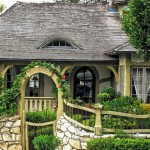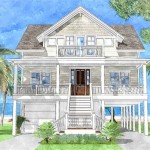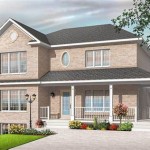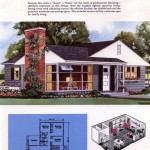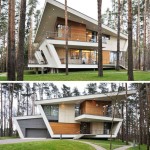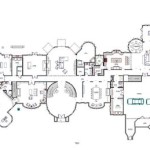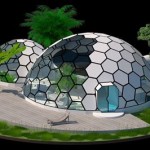Bird House Plans For Bluebirds are detailed instructions that guide the process of constructing a suitable nesting site for bluebirds. These plans provide specifications for materials, dimensions, and assembly methods, ensuring that the resulting structure meets the specific needs and preferences of bluebirds.
Whether you’re an experienced woodworker or just starting out with a new hobby, Bird House Plans For Bluebirds offer a practical and engaging way to help these vibrant birds. By following these plans, you can create a welcoming home for bluebirds, fostering their presence in your backyard and providing them with a safe and comfortable space to raise their young.
In this article, we’ll dive into the details of Bird House Plans For Bluebirds, exploring the materials, design considerations, and step-by-step instructions involved in building a successful bluebird nesting box. We’ll also provide tips and suggestions for enhancing the appeal and functionality of your birdhouse, ensuring that it becomes a favorite nesting spot for generations of bluebirds to come.
When crafting Bird House Plans For Bluebirds, keep these essential points in mind:
- 1. Suitable dimensions
- 2. Proper ventilation
- 3. Unobstructed entrance hole
- 4. Drainage provision
- 5. Predator-resistant design
- 6. Durable materials
- 7. Appropriate placement
- 8. Regular monitoring
- 9. Respectful maintenance
By adhering to these guidelines, you can create a nesting box that provides a safe and comfortable home for bluebirds, helping them thrive in your backyard.
1. Suitable dimensions
The dimensions of your bluebird house are crucial to ensure the comfort and safety of its feathered occupants. The internal space should be large enough to accommodate a nesting pair and their young, while not being so large that it becomes drafty or difficult to defend against predators. The entrance hole should be the appropriate size for bluebirds, allowing them easy access while deterring larger birds from entering.
The following dimensions are recommended for a bluebird house:
- Floor space: 4 inches wide x 4 inches deep
- Height: 6 inches from the floor to the ceiling
- Entrance hole: 1-1/2 inches in diameter, centered 1-1/2 inches below the top of the front wall
It’s important to note that these are just general guidelines. You may need to adjust the dimensions slightly depending on the specific species of bluebird you are trying to attract. For example, Western Bluebirds prefer slightly larger nesting boxes than Eastern Bluebirds.
In addition to the internal dimensions, you also need to consider the external dimensions of your bluebird house. The overall size of the house should be proportionate to the size of the birds, and it should be easy to mount and maintain. A good rule of thumb is to make the external dimensions about twice the size of the internal dimensions.
2. Proper ventilation
Proper ventilation is essential for the health and well-being of bluebirds. A well-ventilated nest box will help to regulate temperature and humidity, preventing the buildup of moisture and mold. Good ventilation also helps to circulate fresh air, which is important for the birds’ respiratory health.
- Ventilation holes
The most important aspect of proper ventilation is to provide adequate ventilation holes. These holes should be located near the top of the nest box, on opposite sides. The holes should be large enough to allow air to circulate freely, but not so large that they create a draft.
- Avoid overcrowding
Another important aspect of proper ventilation is to avoid overcrowding the nest box. Bluebirds need space to move around and to regulate their body temperature. If the nest box is too crowded, the birds may become stressed and overheat.
- Clean the nest box regularly
To ensure proper ventilation, it is important to clean the nest box regularly. This will help to remove any debris or nesting material that may be blocking the ventilation holes.
- Monitor the nest box for signs of poor ventilation
If you notice that the nest box is not well-ventilated, you may see signs of poor ventilation, such as condensation on the walls of the box or mold growth. If you see any of these signs, you should take steps to improve the ventilation.
By following these tips, you can help to ensure that your bluebird house has proper ventilation, which is essential for the health and well-being of the birds.
3. Unobstructed entrance hole
The entrance hole of your bluebird house should be unobstructed to allow the birds to easily enter and exit the nest. The hole should be large enough for the birds to fit through comfortably, but not so large that it allows predators to enter. A good rule of thumb is to make the entrance hole 1-1/2 inches in diameter.
It is also important to make sure that the entrance hole is not obstructed by any branches or other objects. If the entrance hole is obstructed, the birds may not be able to get into or out of the nest, which could lead to their death.
In addition to being unobstructed, the entrance hole should also be placed in a way that makes it difficult for predators to reach. The entrance hole should be placed high up on the nest box, and it should be facing away from the prevailing wind.
By following these tips, you can help to ensure that the entrance hole of your bluebird house is unobstructed, which will allow the birds to easily enter and exit the nest and will help to protect them from predators.
In addition to the above, here are some other tips for creating an unobstructed entrance hole for your bluebird house:
- Make sure that the entrance hole is not too close to the bottom of the nest box. If the entrance hole is too close to the bottom, predators may be able to reach in and grab the birds or their eggs.
- Avoid placing the entrance hole directly above a perch. If the entrance hole is directly above a perch, predators may be able to land on the perch and reach into the nest.
- If you are concerned about predators, you can install a predator guard around the entrance hole. A predator guard is a metal or plastic plate that covers the entrance hole and makes it difficult for predators to reach in.
By following these tips, you can help to create an unobstructed entrance hole that will allow the birds to easily enter and exit the nest and will help to protect them from predators.
4. Drainage provision
Drainage provision is an important consideration for bird house plans for bluebirds. A well-drained nest box will help to keep the birds dry and comfortable, and it will also help to prevent the growth of mold and mildew.
- Provide drainage holes
The most important aspect of drainage provision is to provide adequate drainage holes. These holes should be located in the bottom of the nest box, and they should be large enough to allow water to drain out freely. You can drill several small holes, or you can cut a larger hole and cover it with wire mesh to prevent the birds from escaping.
- Slope the floor of the nest box
Another important aspect of drainage provision is to slope the floor of the nest box. This will help to direct water towards the drainage holes and prevent it from pooling in the bottom of the box.
- Use a moisture-resistant material
When choosing a material for your bluebird house, it is important to select a moisture-resistant material. This will help to prevent the nest box from rotting or becoming moldy.
- Clean the nest box regularly
To ensure proper drainage, it is important to clean the nest box regularly. This will help to remove any debris or nesting material that may be blocking the drainage holes.
By following these tips, you can help to ensure that your bluebird house has adequate drainage, which will help to keep the birds dry and comfortable and will help to prevent the growth of mold and mildew.
5. Predator-resistant design
When designing and building a bluebird house, it is important to consider ways to make it predator-resistant. Predators such as cats, snakes, and squirrels can easily access and destroy bluebird nests, so it is important to take steps to protect the birds and their young.
- Use a sturdy material
The first step to creating a predator-resistant bluebird house is to use a sturdy material. Wood is a good option, as it is strong and durable. You can also use metal or plastic, but these materials may not be as effective at deterring predators.
- Make sure the house is securely mounted
Once you have chosen a sturdy material, you need to make sure that the house is securely mounted. The house should be placed on a post or tree trunk, and it should be high enough off the ground to make it difficult for predators to reach. You can also use a predator guard to further protect the house from predators.
- Eliminate perches
One of the ways that predators can access bluebird houses is by using perches. Perches provide a place for predators to sit and wait for the birds to enter or exit the house. To eliminate perches, you can trim any branches that are close to the house. You can also place a baffle around the entrance hole to make it more difficult for predators to reach.
- Use a predator guard
A predator guard is a metal or plastic plate that covers the entrance hole of the bluebird house. Predator guards make it difficult for predators to reach into the house and grab the birds or their eggs. You can purchase a predator guard or you can make your own.
By following these tips, you can help to create a predator-resistant bluebird house that will help to protect the birds and their young.
6. Durable materials
When choosing materials for your bluebird house, it is important to select materials that are durable and weather-resistant. This will help to ensure that the house lasts for many years and provides a safe and comfortable home for bluebirds.
Wood is a good option for a bluebird house because it is strong and durable. Cedar is a particularly good choice because it is naturally resistant to rot and decay. However, any type of wood can be used, as long as it is treated with a sealant to protect it from the elements.
Metal is another good option for a bluebird house because it is very durable and weather-resistant. Aluminum is a good choice because it is lightweight and easy to work with. However, any type of metal can be used, as long as it is treated with a rust-resistant coating.
Plastic is a less durable option for a bluebird house, but it is lightweight and easy to work with. Plastic is also a good choice for houses that will be placed in areas with a lot of moisture, as it is not susceptible to rot or decay.
No matter what material you choose, be sure to use high-quality materials and construction methods. This will help to ensure that your bluebird house lasts for many years and provides a safe and comfortable home for bluebirds.
In addition to the above, here are some other tips for choosing durable materials for your bluebird house:
- Use galvanized or stainless steel screws and nails.
- Caulk all seams and joints to prevent water from entering the house.
- Paint or stain the house to protect it from the elements.
- Inspect the house regularly for any signs of damage and make repairs as needed.
By following these tips, you can help to ensure that your bluebird house is durable and weather-resistant, providing a safe and comfortable home for bluebirds for many years to come.
7. Appropriate placement
When choosing a location for your bluebird house, there are several factors to consider to ensure that the birds will be safe and comfortable. The house should be placed in a location that receives plenty of sunlight, is protected from the wind, and is not easily accessible to predators.
- Sunlight
Bluebirds prefer to nest in sunny locations. The sun helps to keep the nest warm and dry, which is important for the survival of the chicks. When choosing a location for your bluebird house, select a spot that receives at least six hours of sunlight per day.
- Protection from the wind
Bluebirds are small birds, and they can be easily blown around by strong winds. When choosing a location for your bluebird house, select a spot that is protected from the wind. This could be a spot near a building, a hedge, or a group of trees.
- Inaccessible to predators
Bluebirds are preyed upon by a variety of animals, including cats, snakes, and squirrels. When choosing a location for your bluebird house, select a spot that is not easily accessible to predators. This could be a spot that is high off the ground, away from trees and shrubs, and away from areas where predators are likely to be present.
- Open area
Bluebirds need to be able to fly in and out of their nest easily. When choosing a location for your bluebird house, select a spot that is open and free of obstructions. This will allow the birds to land and take off without difficulty.
By following these tips, you can help to ensure that your bluebird house is placed in a location that is safe and comfortable for the birds.
8. Regular monitoring
Once you have installed your bluebird house, it is important to monitor it regularly to ensure that it is being used by bluebirds and that the birds are safe and healthy. Monitoring your bluebird house will also help you to identify any problems that may need to be addressed.
Here are some tips for monitoring your bluebird house:
- Check the house for activity.
The first step in monitoring your bluebird house is to check it for activity. Look for signs that bluebirds are using the house, such as droppings, feathers, or nesting material. You can also listen for the sounds of bluebirds, such as their song or their calls.
- Inspect the house for damage.
Once you have checked the house for activity, take some time to inspect it for damage. Look for any holes, cracks, or other damage that could allow predators to enter the house. You should also check the entrance hole to make sure that it is not obstructed.
- Clean the house if necessary.
If you find any droppings or nesting material in the house, you can clean it out. However, it is important to avoid cleaning the house too often, as this can disturb the birds. If you do need to clean the house, be sure to use a mild soap and water solution and rinse the house thoroughly.
- Take notes of your observations.
As you monitor your bluebird house, take notes of your observations. This will help you to track the activity of the birds and to identify any problems that may need to be addressed. You can use a simple notebook or a spreadsheet to record your observations.
By following these tips, you can help to ensure that your bluebird house is being used by bluebirds and that the birds are safe and healthy.
In addition to the above, here are some other tips for monitoring your bluebird house:
- Be patient.
It may take some time for bluebirds to find and use your house. Don’t be discouraged if you don’t see any activity right away. Just keep monitoring the house and be patient.
- Don’t disturb the birds.
Once bluebirds have started using your house, it is important to avoid disturbing them. This means avoiding loud noises, sudden movements, and other activities that could scare the birds away.
- Enjoy the birds.
Monitoring your bluebird house is a great way to enjoy the birds and to learn more about their behavior. Take some time to sit and observe the birds, and enjoy the beauty of nature.
By following these tips, you can help to ensure that your bluebird house is a success and that you can enjoy the birds for many years to come.
9. Respectful maintenance
Once you have installed your bluebird house and it is being used by bluebirds, it is important to maintain the house in a respectful manner. This means avoiding disturbing the birds, keeping the house clean, and making repairs as needed.
Here are some tips for respectful maintenance of your bluebird house:
- Avoid disturbing the birds.
Once bluebirds have started using your house, it is important to avoid disturbing them. This means avoiding loud noises, sudden movements, and other activities that could scare the birds away. You should also avoid handling the birds or their eggs. If you need to clean the house or make repairs, do so when the birds are not present.
- Keep the house clean.
Bluebirds are clean birds, and they prefer to nest in a clean house. You should clean the house once a year, after the birds have finished nesting. To clean the house, remove all of the old nesting material and droppings. You can use a mild soap and water solution to clean the inside of the house. Be sure to rinse the house thoroughly and allow it to dry completely before putting it back up.
- Make repairs as needed.
Bluebird houses can be damaged by the elements and by predators. It is important to inspect the house regularly for any damage and make repairs as needed. If you find any holes or cracks in the house, you can repair them with wood putty or caulk. If the entrance hole is damaged, you can replace it with a new one.
- Be patient.
It may take some time for bluebirds to find and use your house. Don’t be discouraged if you don’t see any activity right away. Just keep monitoring the house and be patient. Eventually, bluebirds will find your house and make it their home.
By following these tips, you can help to ensure that your bluebird house is a success and that you can enjoy the birds for many years to come.
In addition to the above, here are some other tips for respectful maintenance of your bluebird house:
- Use natural materials.
When making repairs to your bluebird house, use natural materials whenever possible. This will help to keep the house safe for the birds. Avoid using treated lumber or other materials that could contain harmful chemicals.
- Avoid painting or staining the house.
Paint and stain can contain harmful chemicals that could be harmful to the birds. If you want to protect the house from the elements, you can use a clear sealant instead.
- Enjoy the birds.
Monitoring and maintaining your bluebird house is a great way to enjoy the birds and to learn more about their behavior. Take some time to sit and observe the birds, and enjoy the beauty of nature.
By following these tips, you can help to ensure that your bluebird house is a success and that you can enjoy the birds for many years to come.










Related Posts

